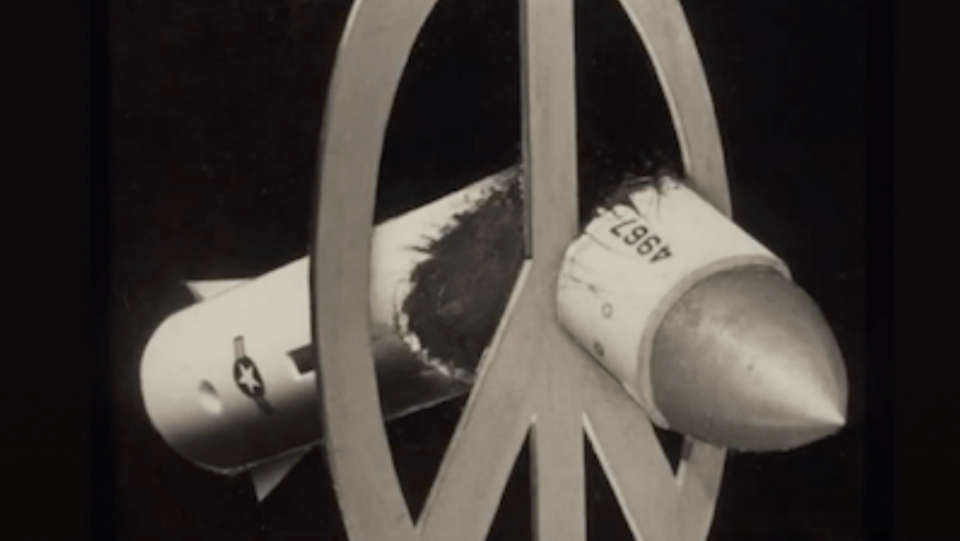
Four public interest groups have scored a win in their struggle to compel the Department of Energy and DoE’s semiautonomous National Nuclear Security Agency to perform a thorough environmental review of plans to greatly increase production of plutonium bomb cores, or pits, for a totally new warhead the Pentagon is developing.
The groups – Savannah River Site Watch, Nuclear Watch New Mexico, Tri-Valley CAREs, and Gullah/Geechee Sea Island Coalition – filed a lawsuit in June 2021, protesting the agencies’ failure to take the “hard look” required by the National Environmental Policy Act at their plans to more than quadruple the production of plutonium pits, splitting production between the Los Alamos National Laboratory in New Mexico and the Savannah River Site in South Carolina. The pits, in turn, are destined for the W87-1 warhead – the first completely new warhead since the end of the Cold War – which is to arm the Sentinel, the new intercontinental ballistic missile the Pentagon is developing.
The four organizations are longtime monitors of sites where U.S. nuclear weapons are developed. Their suit seeks to compel the agencies to conduct a nationwide Programmatic Environmental Impact Statement, or PEIS, as required under NEPA.
The government agencies, in turn, challenged the organizations’ standing to sue. In her ruling, Judge Mary Geiger Lewis thoroughly rejected the agencies’ claim, saying it was “not a close call.”
The South Carolina Environmental Law Project filed the suit after the NNSA decided it wasn’t necessary to do a broad nationwide review of the plan, instead relying on a supplemental analysis of an outdated PEIS completed over a decade ago, and a separate environmental review done only for the Savannah River Site.
“We were able to defeat yet another attempt to use standing as a weapon to keep members of the public out of the government’s decision-making process,” Leslie Lenhardt, senior managing attorney at SCELP, said in a statement.
The monitoring groups say that despite outdated analyses failing to account for significant changes in circumstances, the U.S. government has so far ignored repeated calls from the public, including the plaintiffs specifically, to fully examine the environmental and safety aspects of the pit production plan, which would involve not only Los Alamos Lab and the Savannah River Site but also five more sites spanning the country. They say the plan would create massive amounts of dangerous and radioactive material, cost hundreds of billions of taxpayer dollars, risk a new nuclear arms race, and violate NEPA, the nation’s foundational environmental law.
Jay Coghlan, executive director of Nuclear Watch New Mexico, said, “It’s critical that the public understands that no future pit production is to maintain the safety and reliability of the existing nuclear weapons stockpile. Instead, it is for speculative new designs that can’t be tested because of the international testing moratorium. Or worse yet, it could prompt the U.S. to resume testing, which would have severe proliferation consequences.”
He added, “This is the kind of needed public discussion the Department of Energy seeks to shut down while spending enormous sums of taxpayers’ money on expanding nuclear weapons production.”
Marylia Kelley, executive director of Livermore, Calif.-based Tri-Valley CAREs, said that what’s at stake in the litigation “is nothing less than the question of whether the federal government will be allowed to run roughshod over affected communities like mine all across the country.”
Kelley said the four organizations believe the court “will ultimately agree with Plaintiff groups that the NNSA must produce a nationwide Programmatic Environmental Impact Statement and hold public hearings at all of the locations that will be actively involved in these dangerous plutonium bomb core activities, including Livermore. The analysis of risks must precede implementation of the project in order to forestall serious environmental degradation and potential loss of life.”
In an interview, Kelley pointed out that DoE and NNSA have done nothing to illuminate the risks and dangers at all the sites to be involved in producing the new pits.
She said one of the sites proposed for actual pit production, Savannah River Site in Aiken, S.C., has never manufactured pits. The other production site, Los Alamos Lab, has never produced more than 11 pits in a year.
According to a report issued by the Government Accountability Office, another five sites around the country are to be involved in pit production in various ways.
Livermore Lab, which has developed the W87-1 warhead, will be “up to its eyeballs in plutonium pit work to qualify and certify the processes,” Kelley said because every one of the pits is for that warhead.
The Nevada National Security Site will host specific NNSA facilities that are part of expanded pit production, while the Kansas City National Security Campus, in Kansas City, Mo., will produce non-nuclear components for pit production, and Pantex, near Amarillo, Texas, will stage the finished pits and assemble the W87-1 warhead.
Kelley said the Waste Isolation Pilot Plant (WIPP), near Carlsbad, N.M., where all the sites are planning to send their waste, is oversubscribed and doesn’t have enough currently authorized capacity for that waste. “So NNSA has just simply bypassed even doing the analysis, and just written down that they are going to send all their waste to WIPP.”
“The whole pit production scheme relies on these facilities as well as Savannah River and Los Alamos Lab,” she said. “The heart of our litigation is that the NNSA tried to minimize the environmental and health impacts of expanded pit production by segmenting Savannah River in one analysis, segmenting Los Alamos in another, and then entirely leaving out all the other sites, leaving out the transportation routes.”
Kelley said plutonium for manufacturing the pits, the finished pits, and waste from their assembly will all be transported around from one site to another across the country, but the only public hearings have been at Savannah River, and communities around many of the sites “don’t even know their site is going to have risks” because of the new pit production program.
“So what we’re saying to the court is that this integrated, nationwide, programmatic analysis of risks and dangers must take place before the agency implements the program, in order to help lower the risks and loss of life. From my point of view, in addition, it’s incredibly important and a basic environmental justice and small-d democracy issue that these other sites, and the people who live around them, have a voice in the decision.”
Turning to the fundamental issue of what role the new plutonium pits can have in a U.S. Nuclear Declaratory Policy that stresses the role of nuclear weapons in deterrence and defense, Kelley said the issue is “important to all of us, not only because there are risks involved that have yet to be analyzed, not only because billions upon billions of dollars are involved, but also because the risk and the money are both in support of a very proliferation-provocative U.S. program that puts us all in danger.”
Kelley said that in their litigation, the four organizations are focusing on the kind of relief the law can give, such as mandating the Programmatic Environmental Impact Statement. “But to broadly stop the program there are other opportunities.”
One is contacting Congressional representatives about nuclear weapons issues, urging them not to spend taxpayers’ money in that way, and holding them accountable. When people’s representatives in Congress are on the Armed Services Committee or the Appropriations Committee, the impact can be even greater.
Kelley also emphasized the importance of people talking with each other. “Programs like this thrive in the dark, so writing letters to the editor, calling friends and colleagues, bringing the issues up in meetings, getting a speaker – all these things are very important.”
Saying she has seen “many instances” of the public becoming aware, educating itself, and then acting to stop a program, she cited two involving Livermore Lab that occurred during the George W. Bush administration.
In one case, the lab had planned to develop a new nuclear bomb, the Robust Nuclear Earth-Penetrating Bomb. “Public outcry helped to stop the effort in its tracks, and that bomb was never developed.”
The other instance involved the Reliable Replacement Warhead. While Tri-Valley CAREs was involved, Kelley said, once the public was engaged, public input really mattered.
“Once again, we were able to stop a new warhead Livermore Lab was developing. It’s often public outcry that pushes our officials to ‘do the right thing!’”










